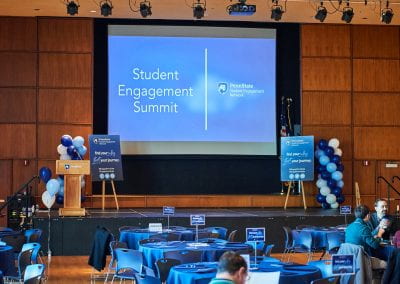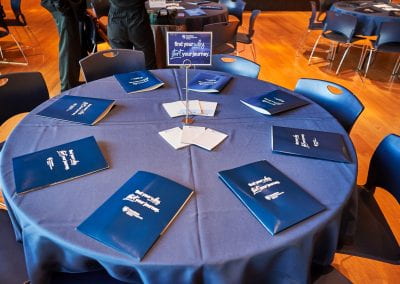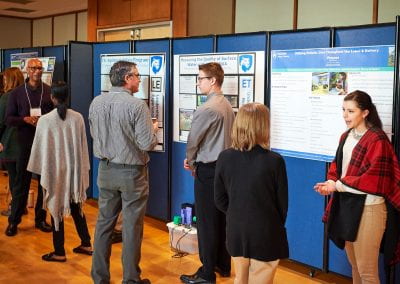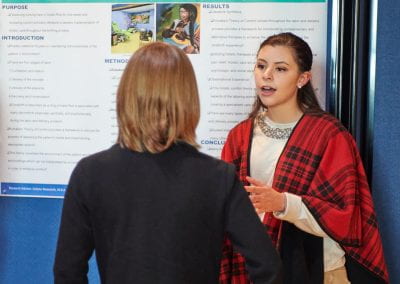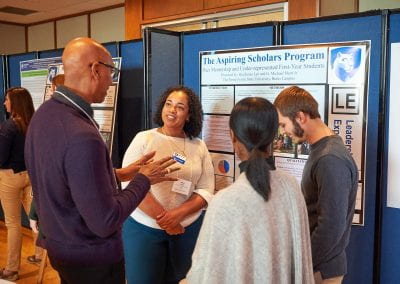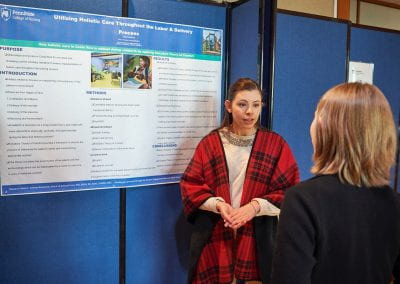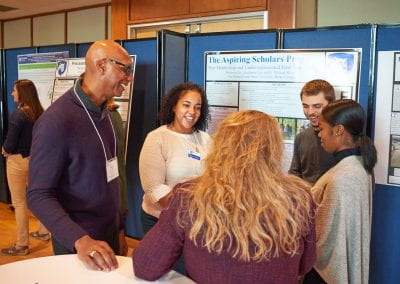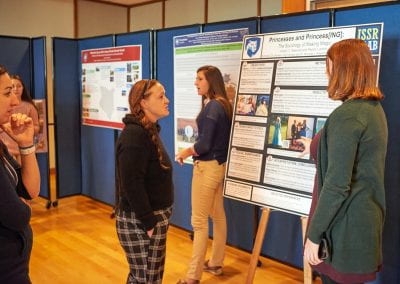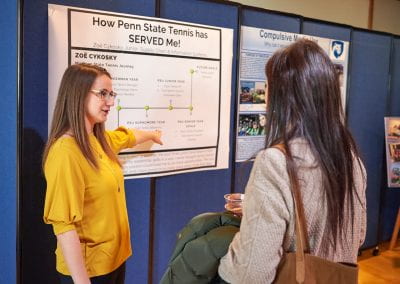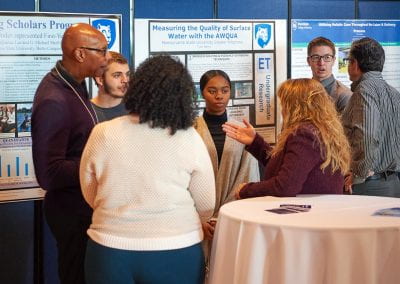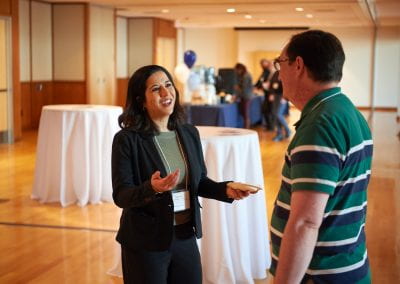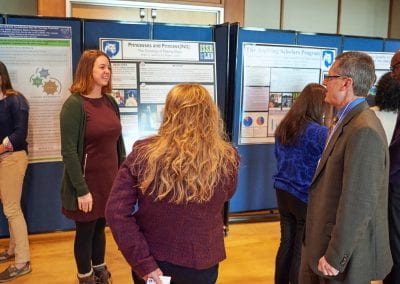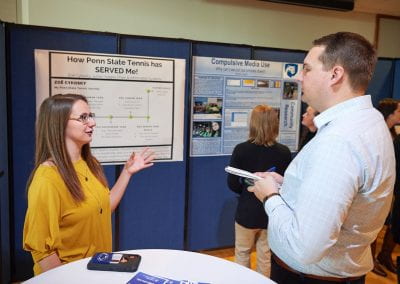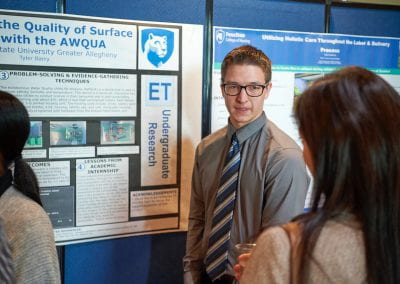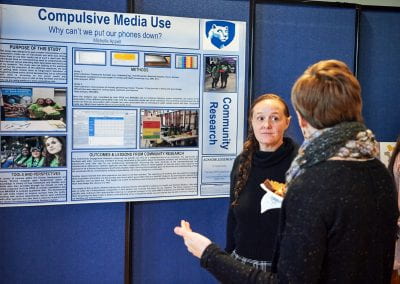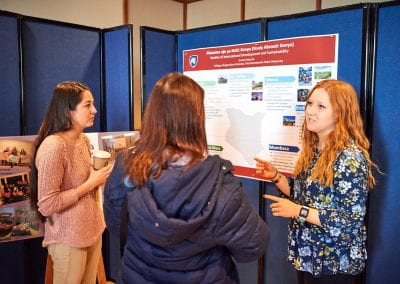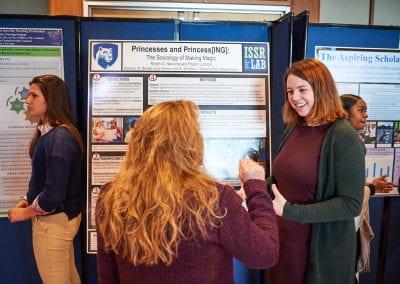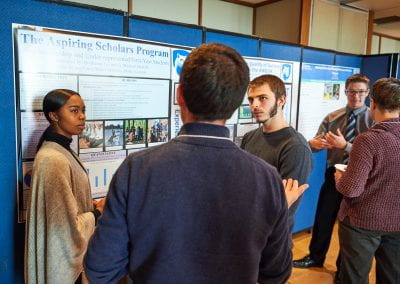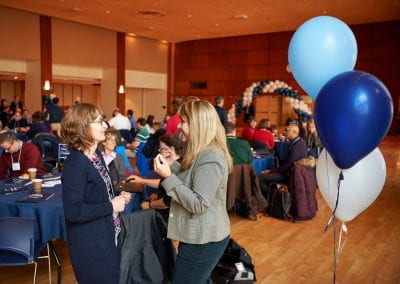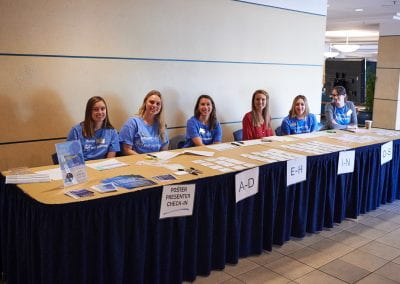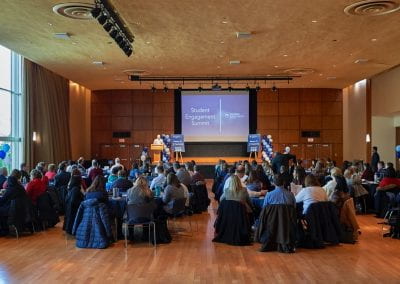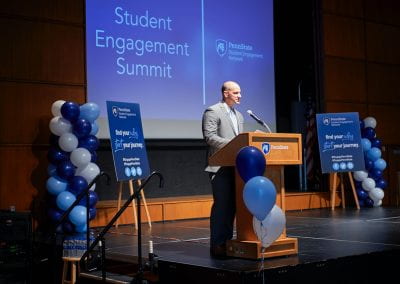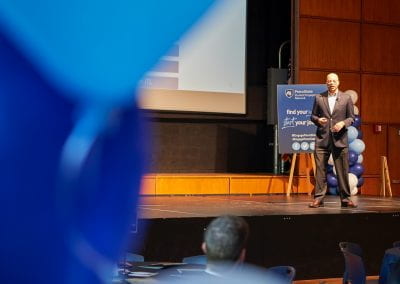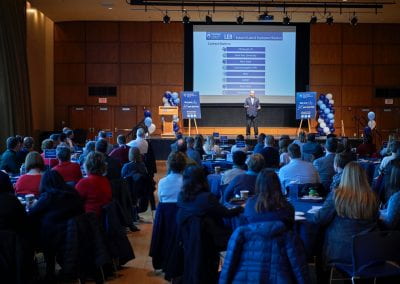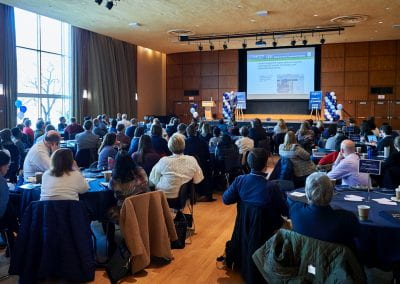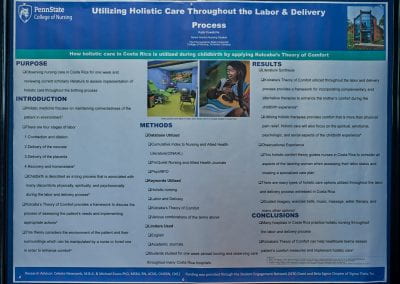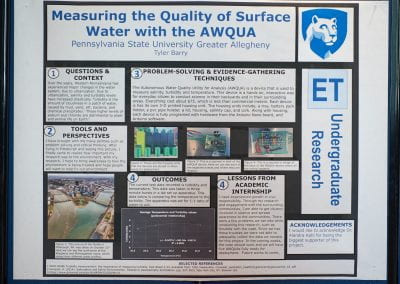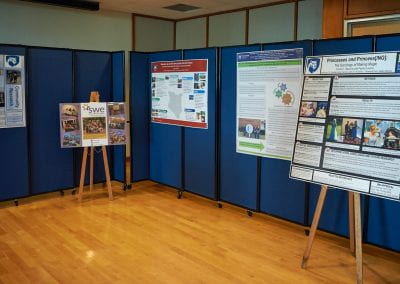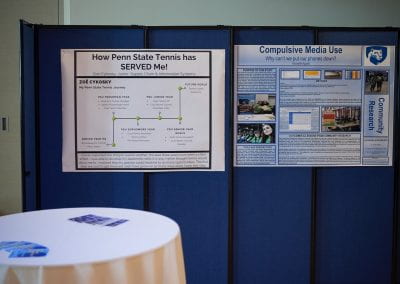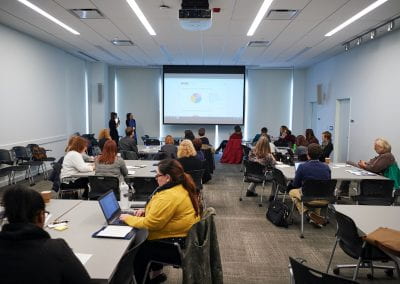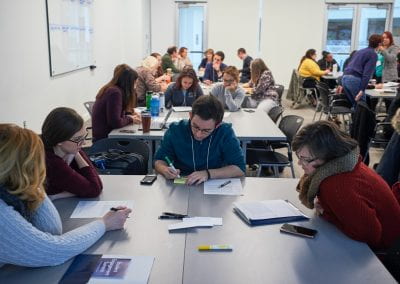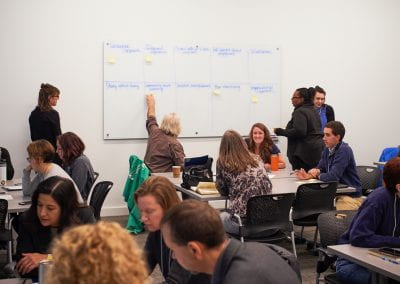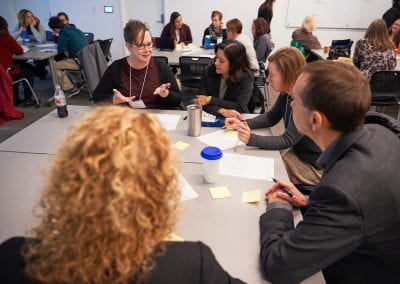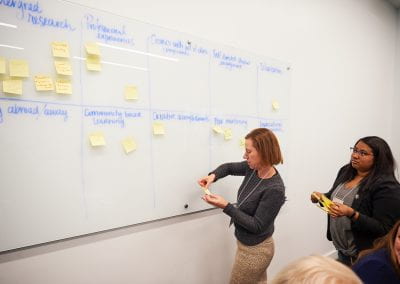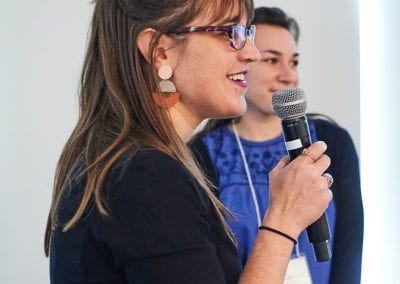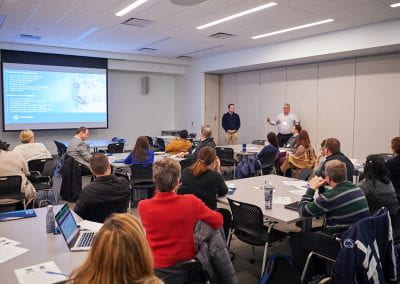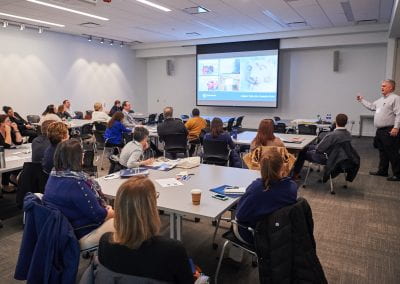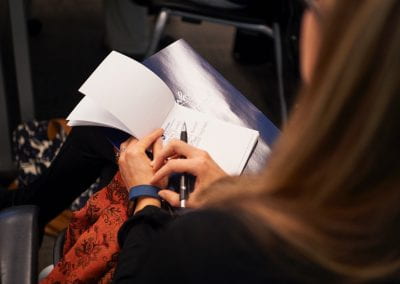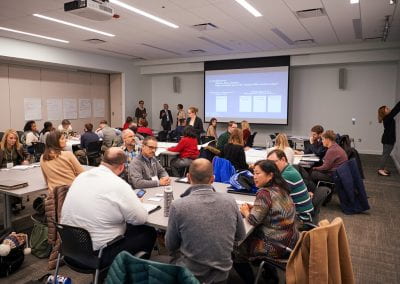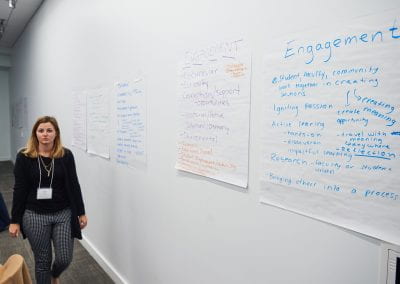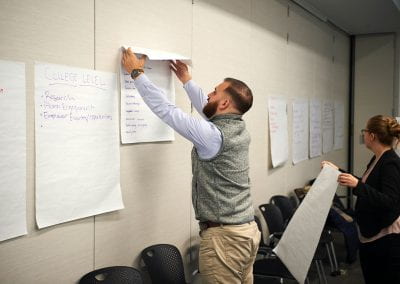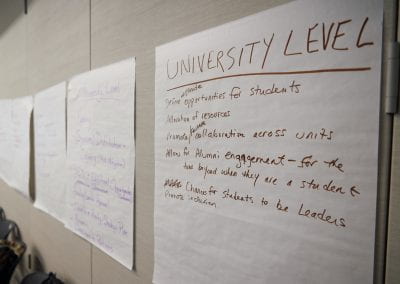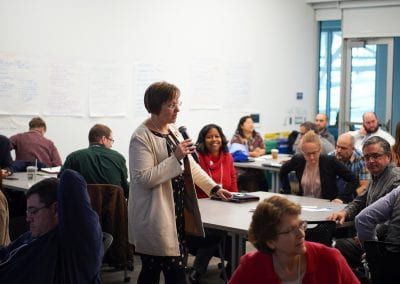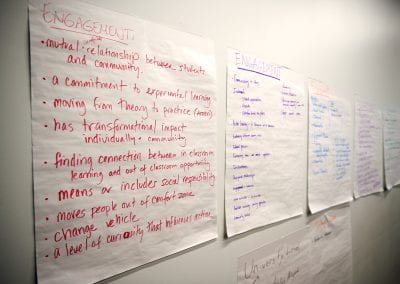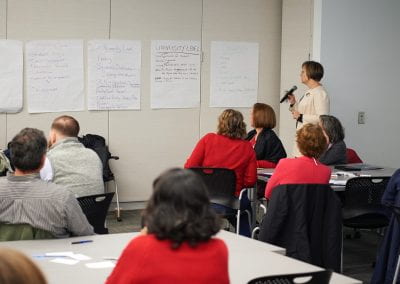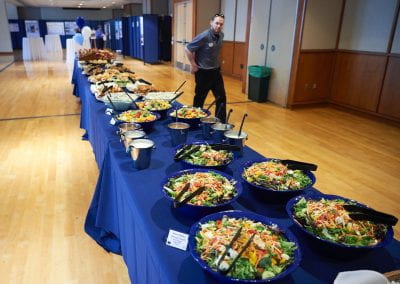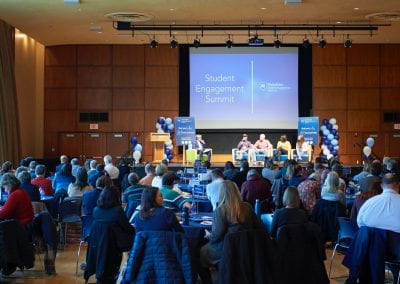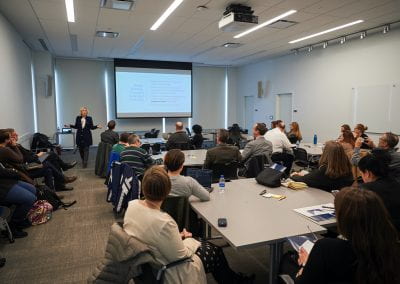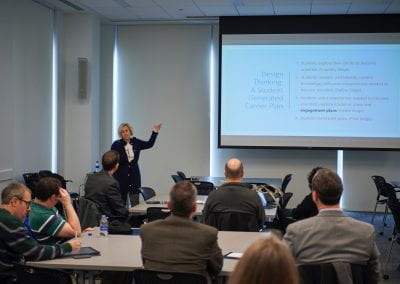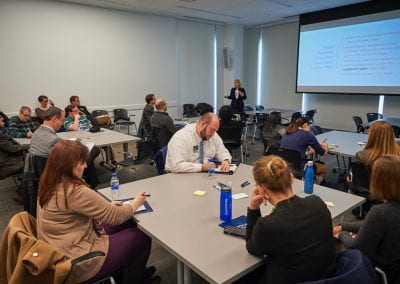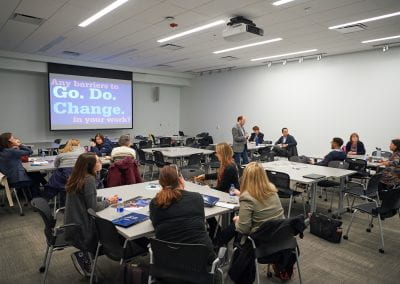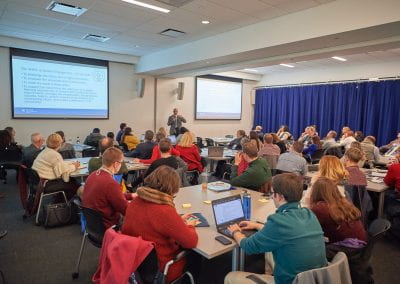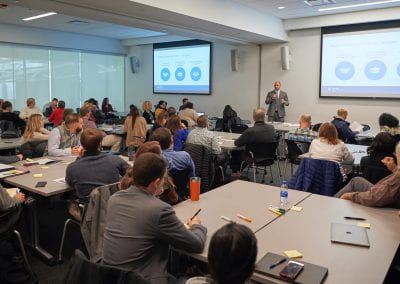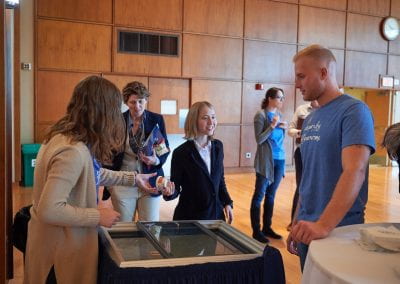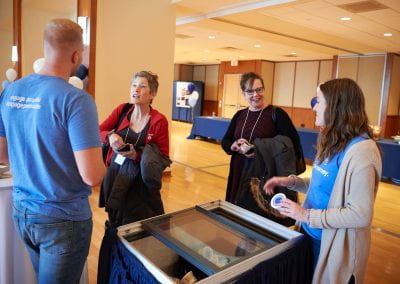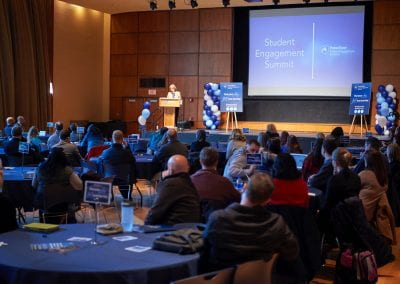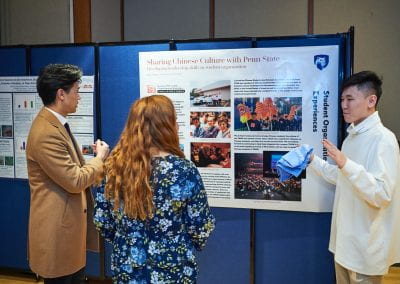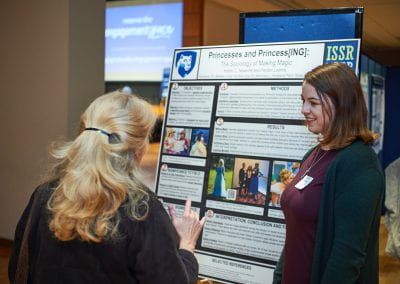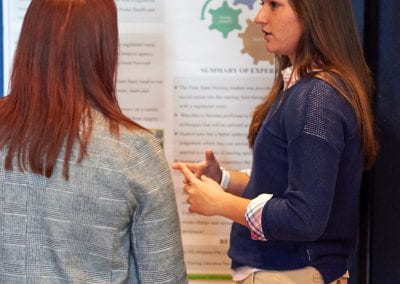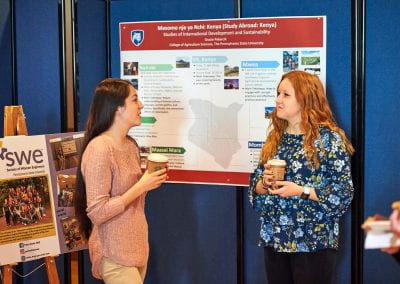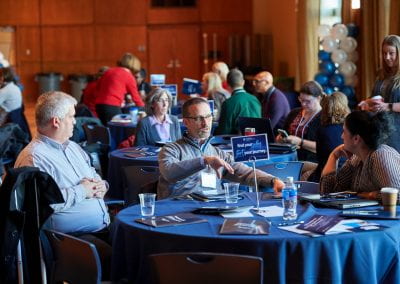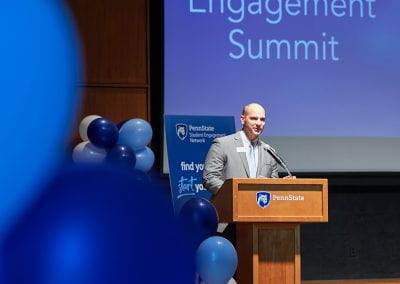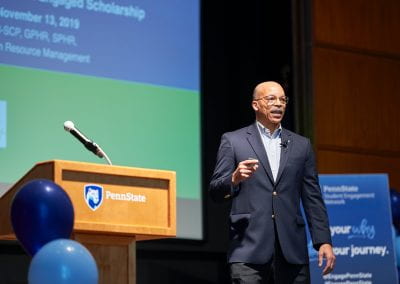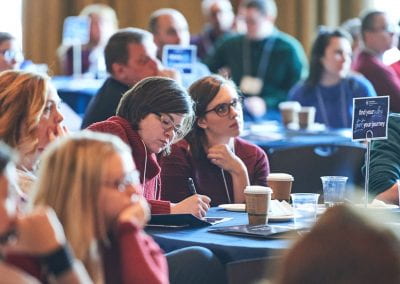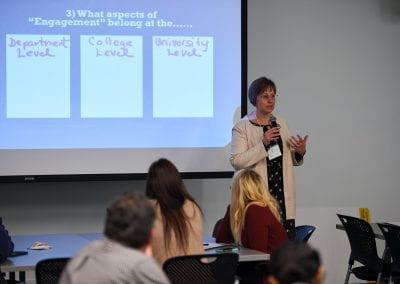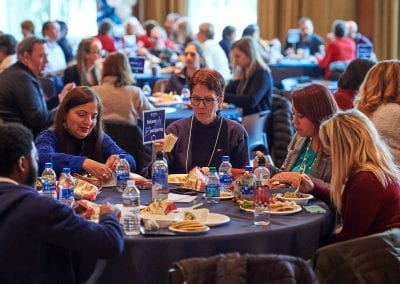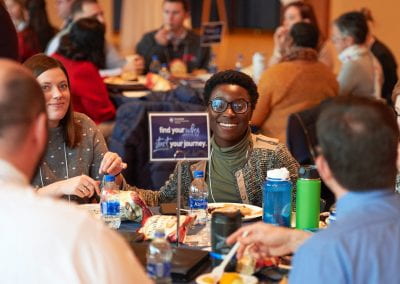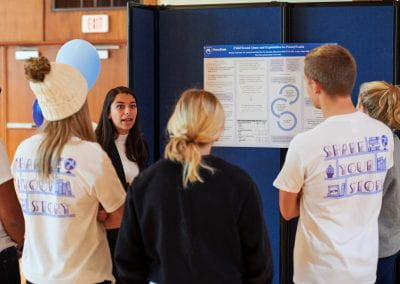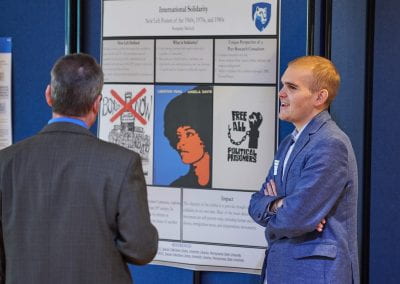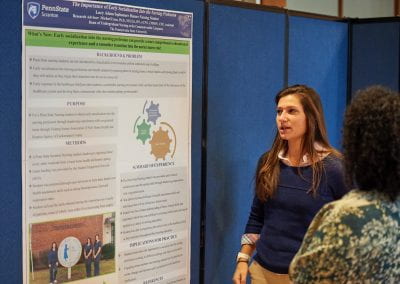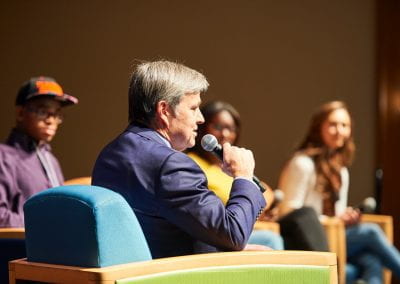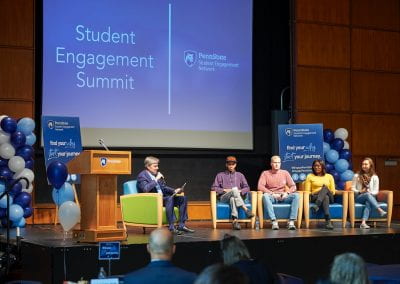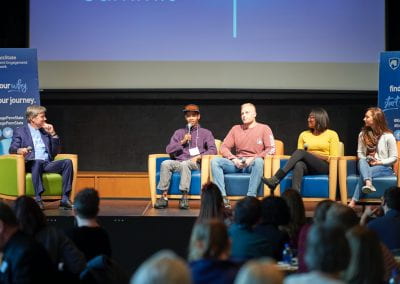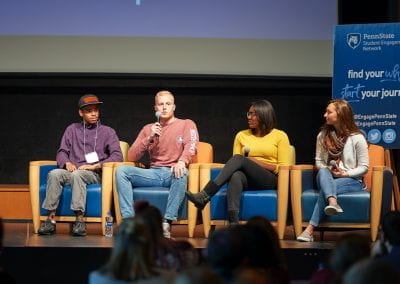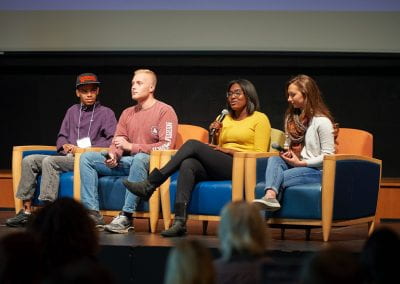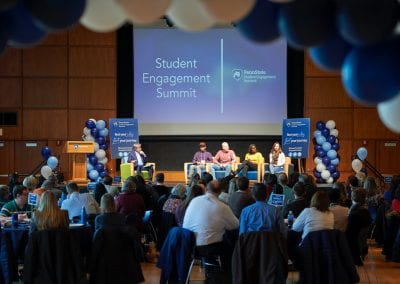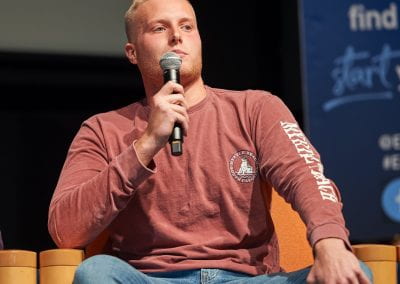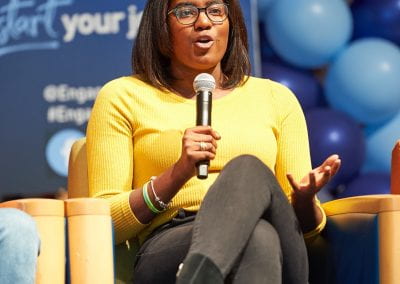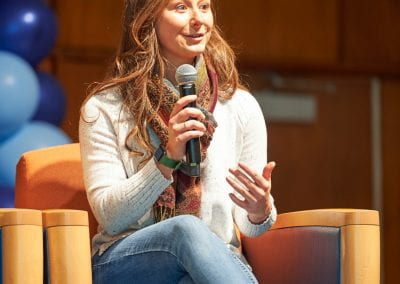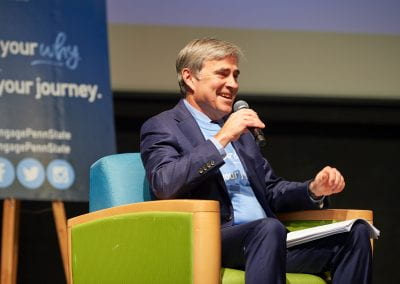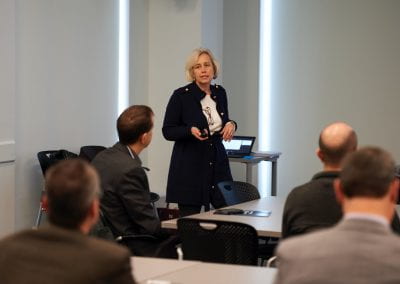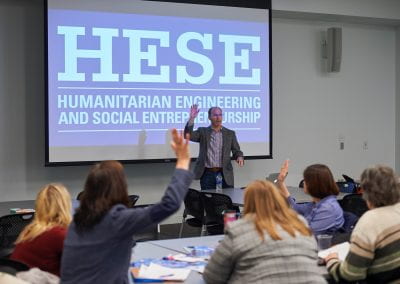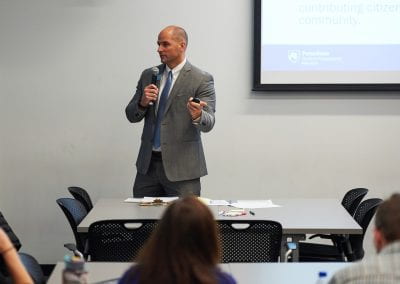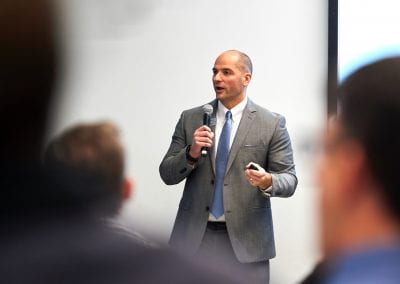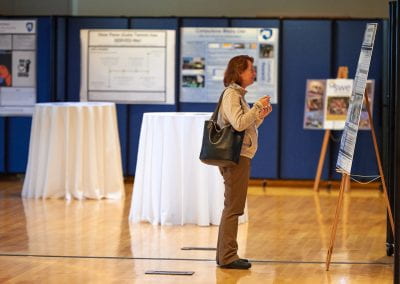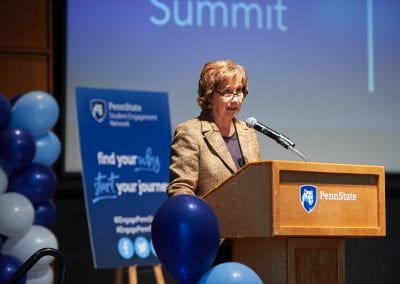2019 Summary
Summary
Penn State faculty and staff from all campuses and a multitude of disciplines converged at the HUB-Robeson Center for a summit on student engagement. The Student Engagement Network on November 13 brought together 130 Penn State employees from a diverse range of backgrounds. It was a full day of sessions, from identifying the societal impact of student engagement to designing the scholarship of engagement.
Key Findings
Based on keynote talks, comprehensive breakout sessions, and a panel discussion, the 2019 Student Engagement Summit resulted in multiple significant findings.
Finding #1
Due to the limited financial and staffing resources available at the Commonwealth Campuses, administrators, faculty, and staff at these locations should work in partnership to find more and better ways to utilize shared resources. This will allow students from the various campuses to jointly participate in unique domestic or international service-immersion experiences. Also, having a dedicated engagement space at each of the Commonwealth Campus will help to facilitate this collaboration.
—Bryan Valentine, Director of Student Affairs and Engagement, Penn State Schuylkill
Finding #2
Different people in the Penn State community (students, faculty, and staff) think about student engagement opportunity types differently. Some of this is due to how easily understood some engagement types are along with who is thinking about or participating in the experience. For example, a student who participates in an engagement opportunity might think about it in one way, while the opportunity provider believes they are providing the opportunity under a different type. This is to be expected, by the Network should keep this in mind and continue to provide avenues to share out experiences, which should represent all opportunity types. We will be able to grow our understanding of different opportunities from learning more about what our students are doing.
We, as a Network, should continue to value individual student engagement journeys. As we better understand these various paths, we should also be critical about how we are supporting students in pursuing different opportunities. These journeys will also help us learn new ways to advertise opportunities, especially those less well known by our students.
—Hailley Fargo, Student Engagement Librarian, University Park, PA
Finding #3
My most significant takeaway was how much people from the same unit and from units across the university appreciated the time to discuss engagement with each other and learn from each other. A group from Smeal said that even though they work in the same college, they so rarely get the chance to sit down and do some bigger picture thinking on engagement together even though many of them have this as a part of their responsibilities. The chance to spend time learning across positions, units, colleges and campuses was perceived as very valuable.
—Karen Marosi
Finding #4
The Student Engagement Network should not only organize a visual framework for student engagement opportunities, for them to access, but should also help them choose the experiences that would best assist in personal and professional development, not forgoing the notion of serendipity. The SEN and the Student Engagement portal would do well to help prepare students for engaged learning experiences by offering design-thinking workshops, leadership training, grant-writing, and reflection workshops in partnership with academic faculty and staff program leaders.
—Michael Zeman, SEN Director


